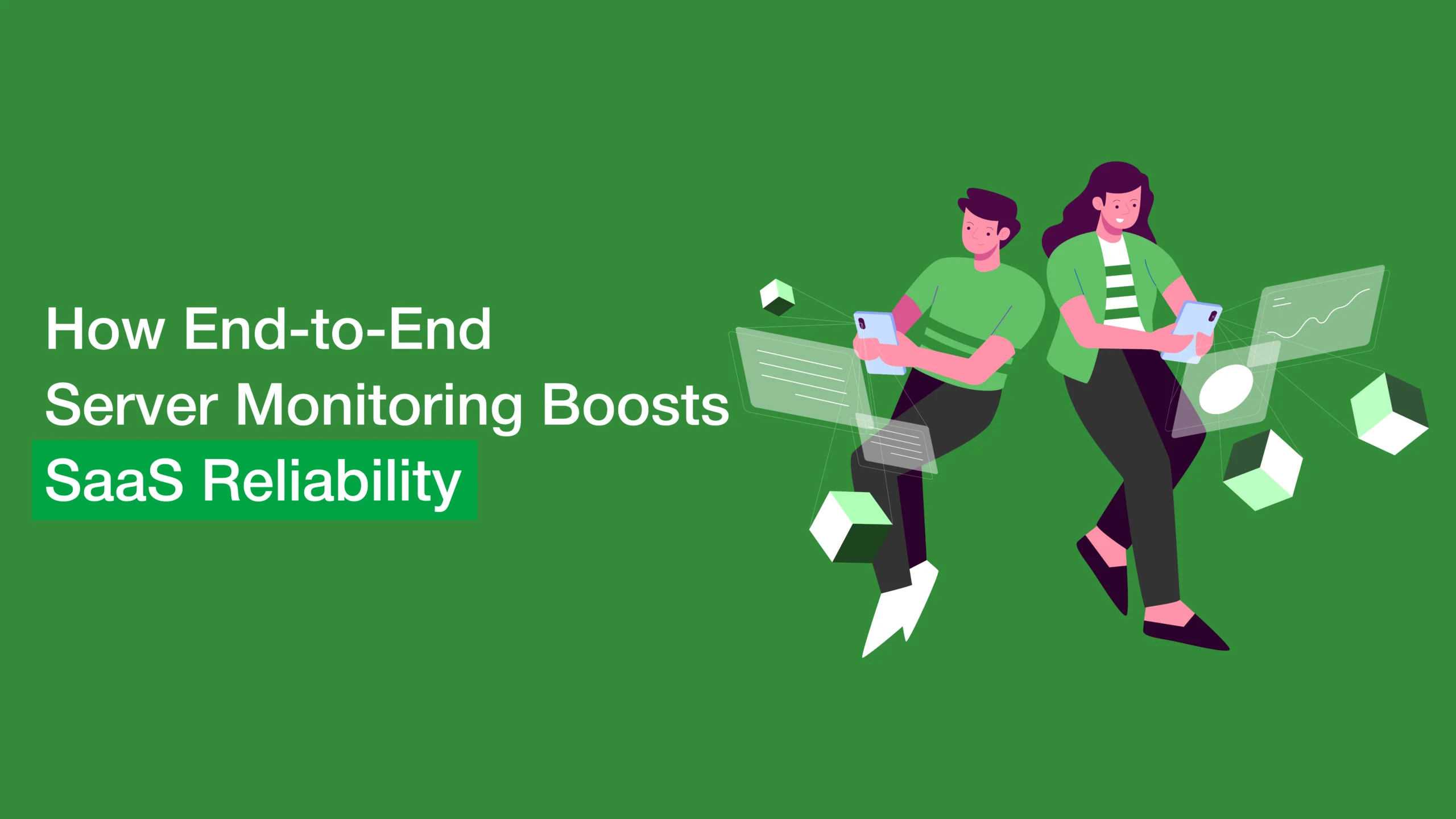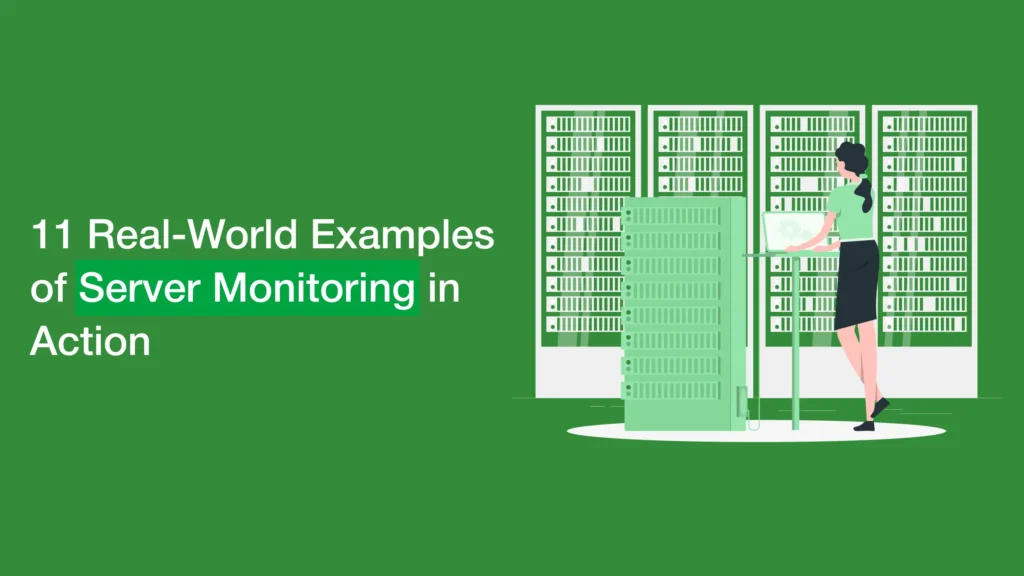
Uptime and dependability are more than just performance indicators in the SaaS-driven economy of today; they are essential to the...

Server monitoring plays a critical role in keeping today’s digital operations running smoothly. From e-commerce giants to healthcare systems, organizations rely on it to track uptime, detect issues early, and optimize performance.
Server monitoring plays a critical role in keeping today’s digital operations running smoothly. From e-commerce giants to healthcare systems, organizations rely on it to track uptime, detect issues early, and optimize performance. In this blog, we’ll walk through 11 real-world server monitoring examples to show how businesses solve complex problems, reduce downtime, and improve reliability—no fluff, just actionable insight.
Real-world server monitoring examples include using tools to track uptime, CPU usage, memory leaks, load spikes, and response times across various industries. These use cases help IT teams maintain system health and reduce downtime.
Whether you’re running on-prem servers or cloud platforms, monitoring server performance is key to ensuring fast, secure, and reliable user experiences. Without proactive monitoring, you risk outages, customer frustration, and missed business opportunities.
If you’re choosing a tool, here’s how to pick the right server monitoring solution based on your business size, infrastructure, and growth needs.
An e-commerce retailer faced frequent checkout failures during peak hours. By implementing uptime monitoring through a server monitoring tool, they identified a recurring memory spike during flash sales. Immediate alerts allowed the team to autoscale resources and prevent downtime, protecting over $200,000 in potential revenue.
A video streaming company used real-time monitoring to track latency spikes in its CDN. By analyzing historical trends and alerts, they reconfigured server routes, improving buffer speed by 35%—resulting in higher user retention.
A SaaS startup offering project management tools integrated server health dashboards to monitor API response times. The tool flagged increased latency after each product update. With better visibility, they resolved performance issues 80% faster.
A FinTech firm noticed their CPU usage spiked every Monday morning. Using enterprise-grade server monitoring, they identified that automatic portfolio syncing overloaded the servers. They rescheduled syncs and balanced loads, reducing outages by 90%.
A cloud-based EHR system used monitoring tools to meet strict SLAs with hospitals. Every second of server downtime was logged and categorized to ensure transparent reporting and timely reimbursements in case of breaches.
An education platform experienced audio lags during online classes. By enabling detailed application and infrastructure monitoring, they traced the issue to underperforming cloud instances, and migrated to optimized regions—resulting in uninterrupted classes.
A retail brand with distributed data centers used Kllyroo’s dashboard to unify their server performance monitoring. It allowed them to visualize memory usage, disk I/O, and network latency across locations from a single view.
A logistics tech provider set up smart alerts using server monitoring to track critical application failures. When a threshold breach occurred, alerts triggered escalations in Slack and JIRA, shortening response time by 60%.
During elections, a government portal used uptime and load monitoring to autoscale infrastructure. This proactive setup ensured zero downtime despite a 10x spike in concurrent users.
n AI firm trained large models that relied on high GPU usage. Server monitoring helped them visualize GPU memory, core usage, and temperature—preventing hardware failures mid-training.
A cloud hosting company used integrated dashboards to share real-time server status with clients. This built trust and reduced support queries by 40%.
Server monitoring tools collect data on key metrics such as CPU usage, memory consumption, disk I/O, and uptime. This data is visualized in dashboards and used to trigger alerts when thresholds are breached. Monitoring solutions also integrate with incident response tools to automate fixes or notify teams.
Key Monitoring Metrics by Use Case
Use Case | Key Metrics Tracked |
E-commerce | Uptime, memory, CPU load |
SaaS | Error rates, memory leaks |
Cloud Infrastructure | Latency, response times |
Streaming Media | Regional load, bandwidth |
Healthcare Systems | Application uptime, response time |
Conclusion
Server monitoring isn’t just about avoiding downtime—it’s about building trust, scaling confidently, and delivering consistently great user experiences. These server monitoring examples show how real teams solve real problems using modern tools and practices.
If you’re ready to improve how you track and manage your infrastructure, start with a platform built for real-world needs.
Try Kllyroo’s server monitoring platform to experience intelligent insights, fast alerts, and a system built for scale. Learn more
Tracking packet loss and latency across routers and switches in real-time is a classic network monitoring example. It's often used alongside server monitoring to ensure end-to-end performance.
By using tools like Kllyroo, teams monitor server uptime, CPU load, memory usage, and more. Alerts are configured for anomalies, and dashboards provide real-time insights for action.
Tools that offer hybrid visibility, real-time alerts, and log analytics—like Kllyroo—are ideal for cloud environments.

Uptime and dependability are more than just performance indicators in the SaaS-driven economy of today; they are essential to the...

Continuous accessibility is essential for e-commerce to flourish. E-commerce website uptime is now essential in 2025, when client expectations are...

The fintech industry operates on trust. Every login attempt, transaction, and real-time balance update needs to be perfect. Fintech infrastructure...
WhatsApp us